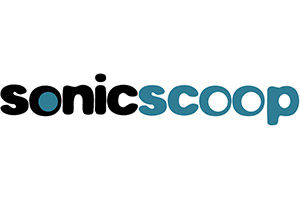Next-Gen Reference Tracks: 12 Top Engineers Share Their Essential Reference Mixes
Dirk Noy, Director of Applied Science and Engineering, WSDG
Role in the Studio: Acoustical consulting and systems engineering with experience in engineering, recording, mixing.
Credit Highlights: Studio design projects for Church Studios, London UK; VSL Synchron Stage, Vienna, Austria; Jungle City Studios, New York USA
Other acoustics projects include Swiss Federal Parliament Building, Bern Switzerland; Maracanâ Stadium, Rio de Janeiro Brazil; Nordstern Club, Basel Switzerland
What He Listens For: My reference tracks usually have one or more of the following three goals:
1) I use the reference tracks to get to know the system—consisting of both the room and the loudspeaker system.
To achieve this, I listen simultaneously and in no particular order for width of frequency range, frequency response evenness, phasing anomalies, stereo stage and panorama, depth of field, phantom center, transient response, crossover characteristics, coupling of loudspeaker with the room, resonances, reflections, standing waves/modal behavior, decay of sound at various frequency ranges, dynamics, distortion, and probably a whole lot of other aspects that don’t really have a technical name.
I guess I am trying to get a “feeling” for the loudspeaker and the room and the interaction of the two.
2) This is often a quite seamless transition from first to second goal. I use the reference track to analyze causes and effects in a loudspeaker/room system. I change one parameter (e.g. the crossover frequency) and listen to the same track (usually a specific excerpt) repeatedly while changing that particular parameter.
Usually, I will make a determination whether what’s the optimal setting for the particular parameter and leave it at that unless further down the line that particular parameter needs readdressing.
I need to mention that although I rely on my ears—which are always the top criteria. I also heavily rely on acoustical measurement technology in both frequency and time domains as I can learn quantitatively from the measurement results.
The listening experience and the measurements in combination generate a complete picture in my head of a many-parameter system and its optimization potential. When in a session where I am actually asked to modify the loudspeakers and/or the room, that’s the moment where I will really dig in and start playing the parameters such as crossover points, equalizer settings, gain and phase—but not before I have made sure that the system is setup in a physically correct manner. (Height, angles, mechanical mounting, airspaces, vibrations etc.).
I tend to change back and forth between measuring and listening mode quite frequently, maybe every 15 minutes over a two-hour calibration session. The goal of the calibration session is to leave the room in better sounding shape than before and that usually is precisely what is achieved.
3) The simple and pure enjoyment of a great sounding loudspeaker/room system by listening to wonderfully performed, recorded and produced music. Probably not surprisingly, this is the part that I enjoy the most.
Next-Gen Reference Track #1: “Hey Now” by London Grammar, from the 2013 album If You Wait.
Great buildup, great production, wide dynamic range, well balanced mix, great female voice, and good depth.
Next-Gen Reference Track #2: Partition by “Beyoncé”, single from the 2013 Beyoncé album, recorded at Jungle City Studios (WSDG design).
This track has massive low frequency content and prominently exhibits a downward sweep almost down to the limit of human hearing.
If I can A: hear the bass going all the way down, and B: hear a smooth (non-bumpy) sweep, I know that the loudspeaker/room system is in very good shape concerning low frequencies, which often is the most critical domain to get it right.
Classic Reference Track: It’s got to be Michael Jackson’s “Thriller.” In smaller to medium setups, including recording studios, this is always the very first and the very last track that I use.
On larger systems in larger spaces such as performing arts centers (theaters, concert halls) I often use “Parce Mihi Domine” by The Hilliard Ensemble and Jan Garbarek. And, on special occasions, Puccini’s “La Bohème.”










